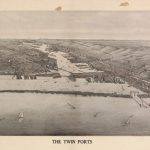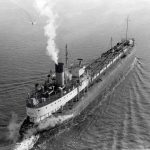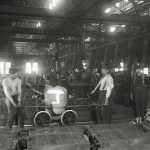The SS Meteor sailed the lakes longer than most ships of her day, and in her many reincarnations she offers a portrait of how some of the industries on the Great Lakes changed– and what those changes meant for Wisconsin. Launched in 1896, the then-named Frank Rockefeller spent the first three decades of her career hauling supplies of iron ore between the ports on the Great Lakes.
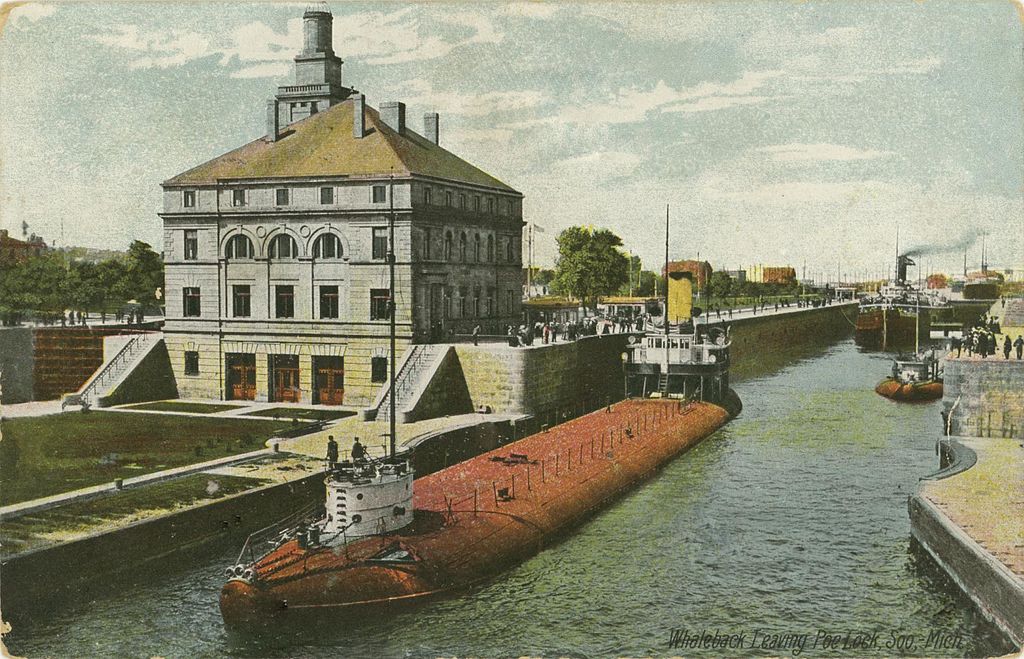 A whaleback navigating the locks at Sault St. Marie. Image from wikimedia commons.
A whaleback navigating the locks at Sault St. Marie. Image from wikimedia commons.
It was customary to rename a vessel after a major reconfiguration of its cargo area, a rebuild, or when sold to a new company. The Meteor sailed under three different names during her lifetime: first, the Frank Rockefeller, second, the South Park, and finally the Meteor. Each of her name changes correspond to major renovations. Often ships were named for a principal person within the company that built or owned the vessel, but sometimes ships were named by categories. The name Meteor, for example, was chosen because most of the vessels owned or bought by the Cleveland Tankers company were renamed with an astronomical word.
From the time that she was just a pile of ore waiting to be smelted, the ship first known as the Frank Rockefeller was shaped by the history of Great Lakes shipping. The Bessemer Process, the same process that made it possible to build ships like the whalebacks out of steel, had recently transformed the communities and mountain ranges of Northern Wisconsin when it was discovered that the Gogebic and Marquette Iron Ranges held large quantities of the high-grade ore needed for the process. Born during its boom years, the Frank Rockefeller’s career also witnessed the decline of Wisconsin iron mining.
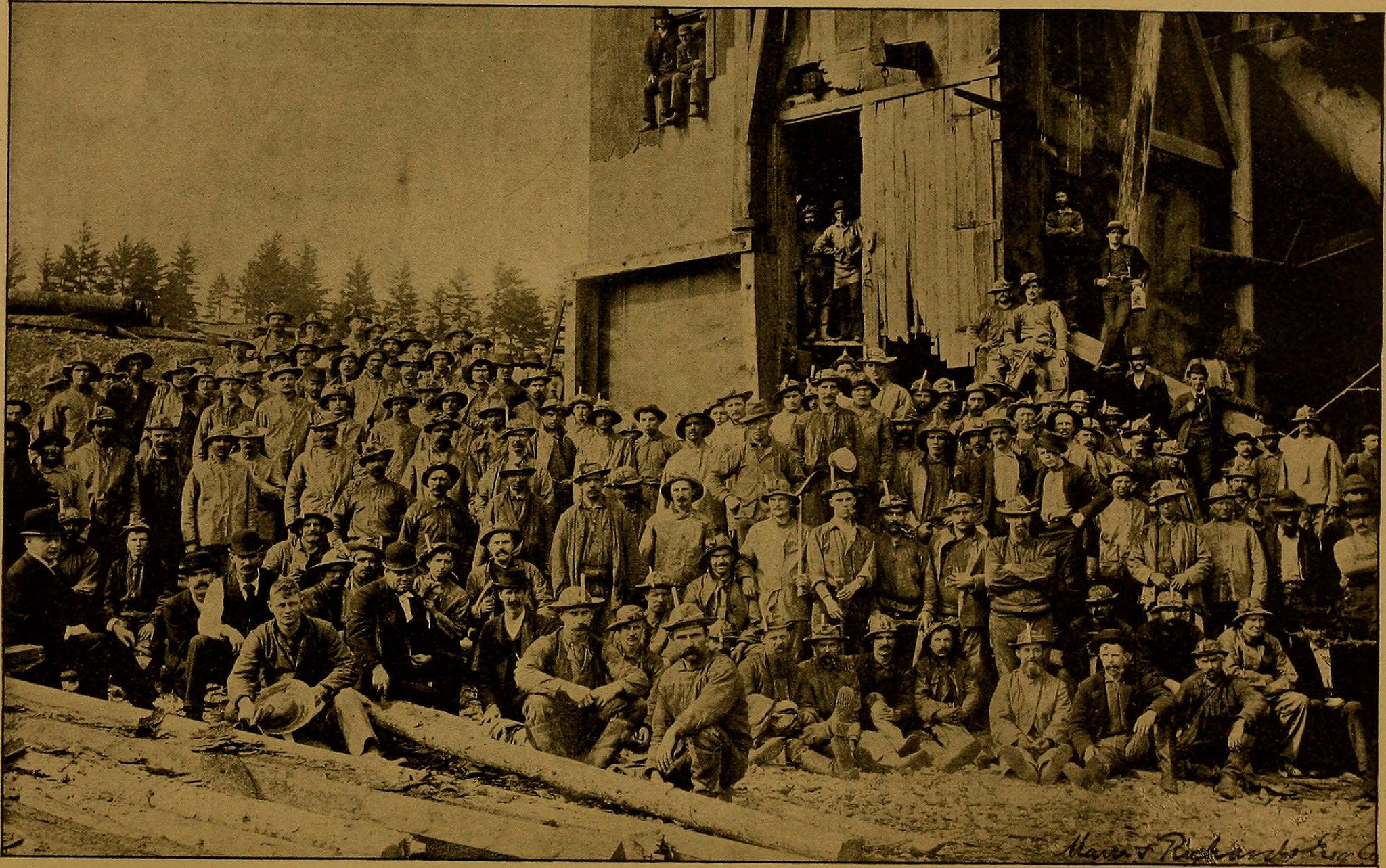
Many ships during this era had regular circuits they ran through the Great Lakes, hauling cargos to docks at various ports. For a few years the Frank Rockefeller hauled ore for the American Steel Barge Company where she was built. Then she was transferred to the Pittsburgh Steamship Fleet around 1901 and hauled iron ore for them until the mid-1920s.
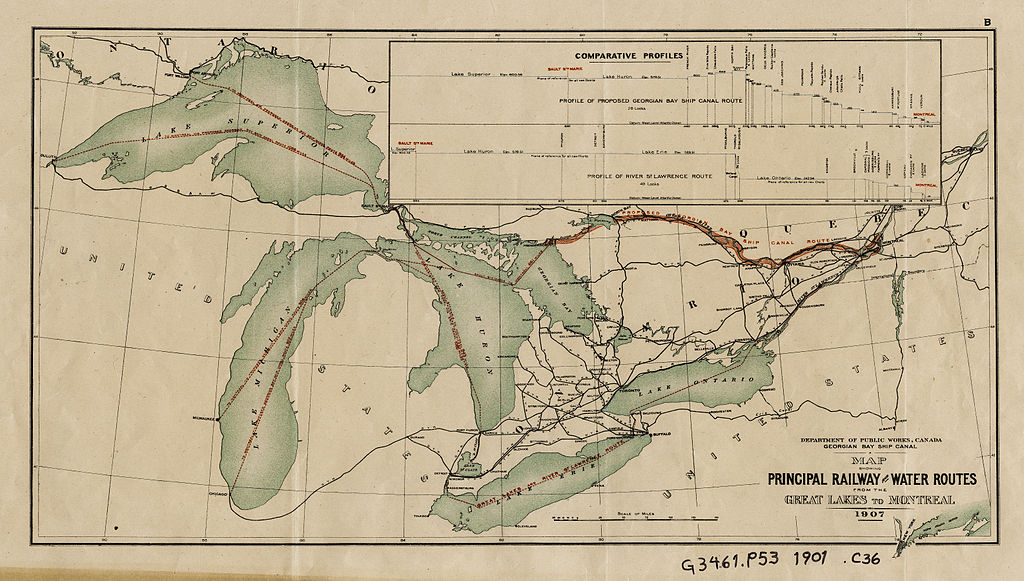
McDougall’s whalebacks were not designed to be unloaded by large machinery. Instead, the whalebacks’ massive open holds were supported by beams and web frames that looked like railroad track rails. The Frank Rockefeller was built two years before George Hulett patented the ore unloading machinery that would, by the 1910s, become ubiquitous in ports across the Great Lakes. Hulett machines reduced the amount of human labor involved in removing ore from ships—shortening the time from a matter of days to a matter of hours.
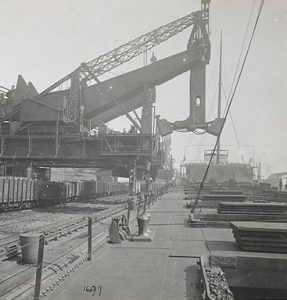
The whaleback’s internal steel frame, which jutted several inches into the hold along the line of the hull, caught the cargo and made it troublesome to remove without much effort. To keep up with the changing face of shipping, in the mid-1920s, the Frank Rockefeller’s hold was reconfigured with arch frames and hopper sides allowing for a more open and easily unloaded cargo hold. Dated and undersized in 1927, the Frank Rockefeller was sold and repurposed yet again—this time for bulk hauling. She was renamed the South Park by her new owners, the Central Dredging Company.
With the spread of affordable mass produced automobiles like the Model T, in the 1920s and 1920s more and more Americans began to travel by car. This transportation revolution also effected the career of the Meteor. By 1934, the Nicholson Transit Company bought the South Park and converted her from a bulk carrier into a car transporter. The Nicholson Transit Company maintained a wide network of interests across the Great Lakes. Nicholson bought the South Park just after Ford opened its gigantic River Rouge factory, and the repurposed whaleback likely carried the new line of Model A cars produced there. In order to carry cars, the South Park was refitted again. This time, the Nicholson company added a flat wooden deck to the rounded hull to create a surface for hauling cars. She could carry nearly 200 automobiles at a time.
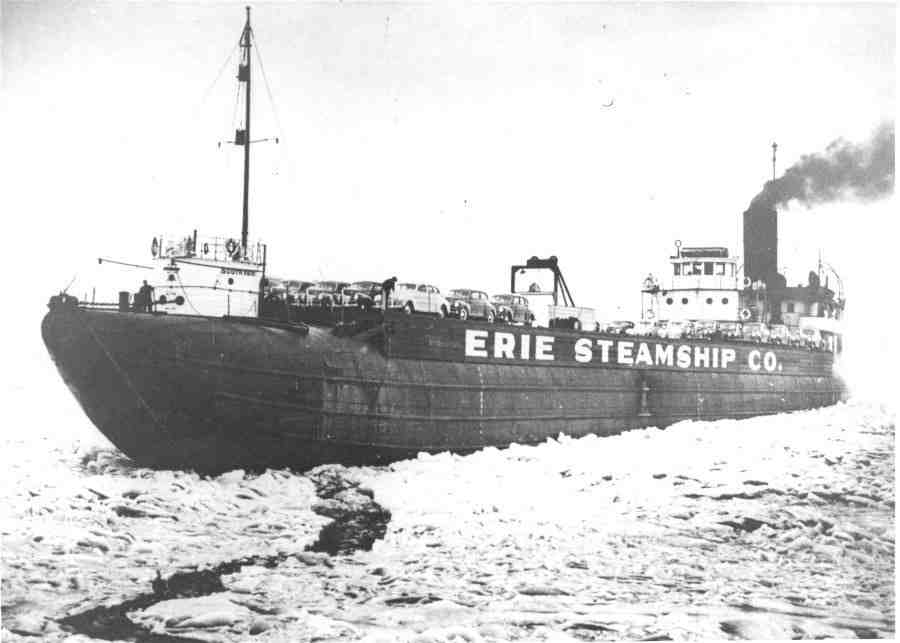
In 1942, a powerful November storm on Lake Michigan destroyed the steering system on the South Park, driving the disabled ship around the lake until the winds subsided. The storm seriously damaged the ship, toppling her smokestack, which crushed the quarters below. Fortunately, the entire crew made it to safety. Despite the storm damage, the South Park was not scrapped.
She was in good enough condition to be repaired for further use. In 1942 and ’43, she went through a major reconstruction and conversion in Manitowoc, Wisconsin, to remake her into an oil tanker to haul oil during World War II. Just as before, when the conversion was completed, she was again renamed – this time as Meteor. The Meteor worked as a tanker until her retirement just over a quarter century later. With 16 tanks in her hold, the Meteor hauled liquid products such as diesel, kerosene, home heating fuels and more. Shipping fleets used various routes through the Lakes; for example, in the late 1960s the Meteor traveled between places like East Chicago, Illinois, Escanaba, Michigan, and Sheboygan, Wisconsin.
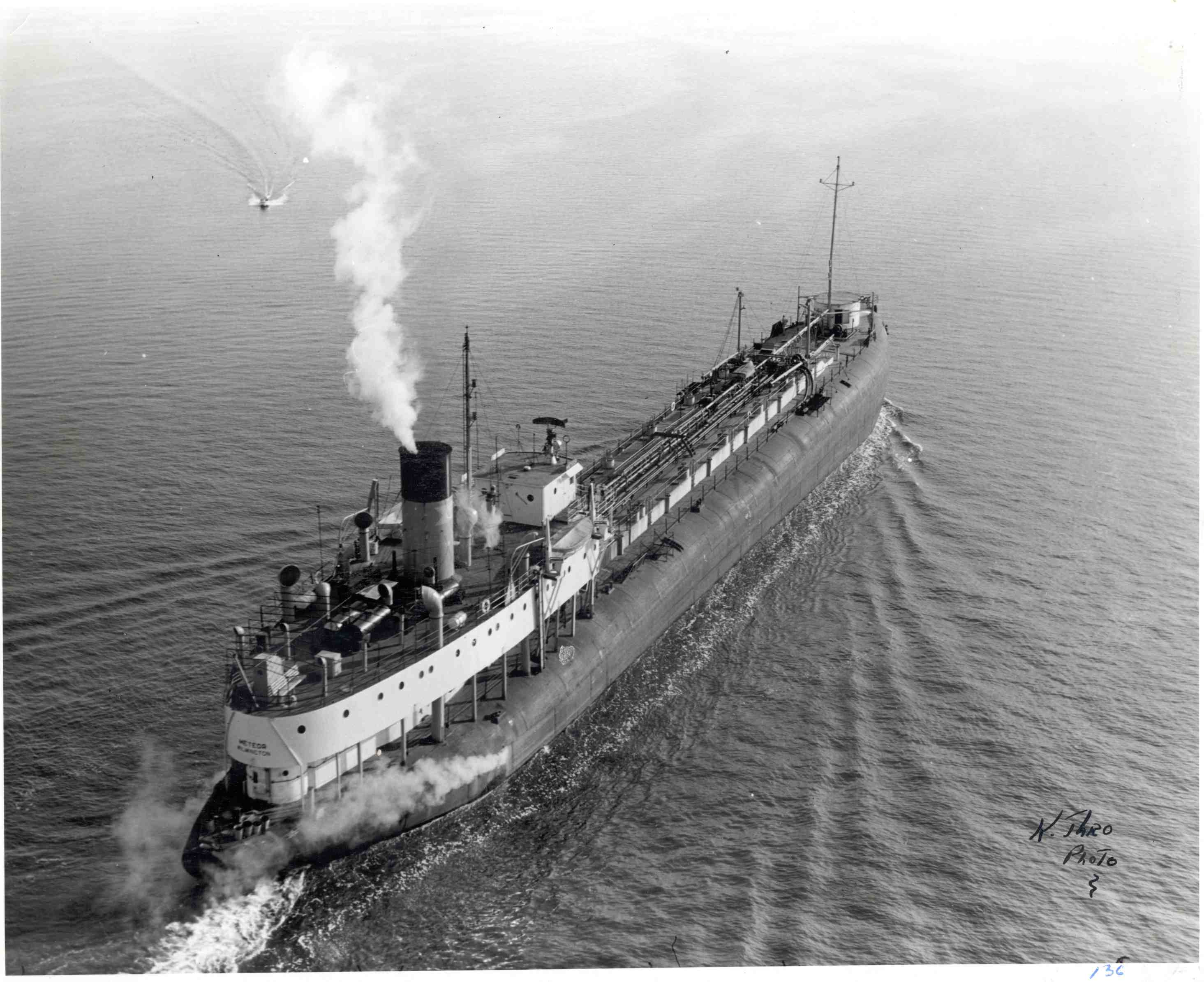
Over the decades, the Meteor traveled around the lakes hauling products as varied as iron ore, automobiles, and cooking fuel. She was sold to different companies as the fortunes of her owners rose and fell, and her name changed twice as she underwent major renovations. By considering her long life, we can get a better sense of the ways that goods and capital connected the ports of the Great Lakes.
After sailing for 75 years under three names, being refitted twice, and carrying a variety of cargos including iron ore, grain, cars, and oil, the SS Meteor was retired in 1969. During that season, she had damaged a section of her hull when she hit a rocky outcrop. Though the damage was repaired, the company that owned her decided not to return her to service. The people of Superior were able to procure her for use as a museum, which she has been since 1973.
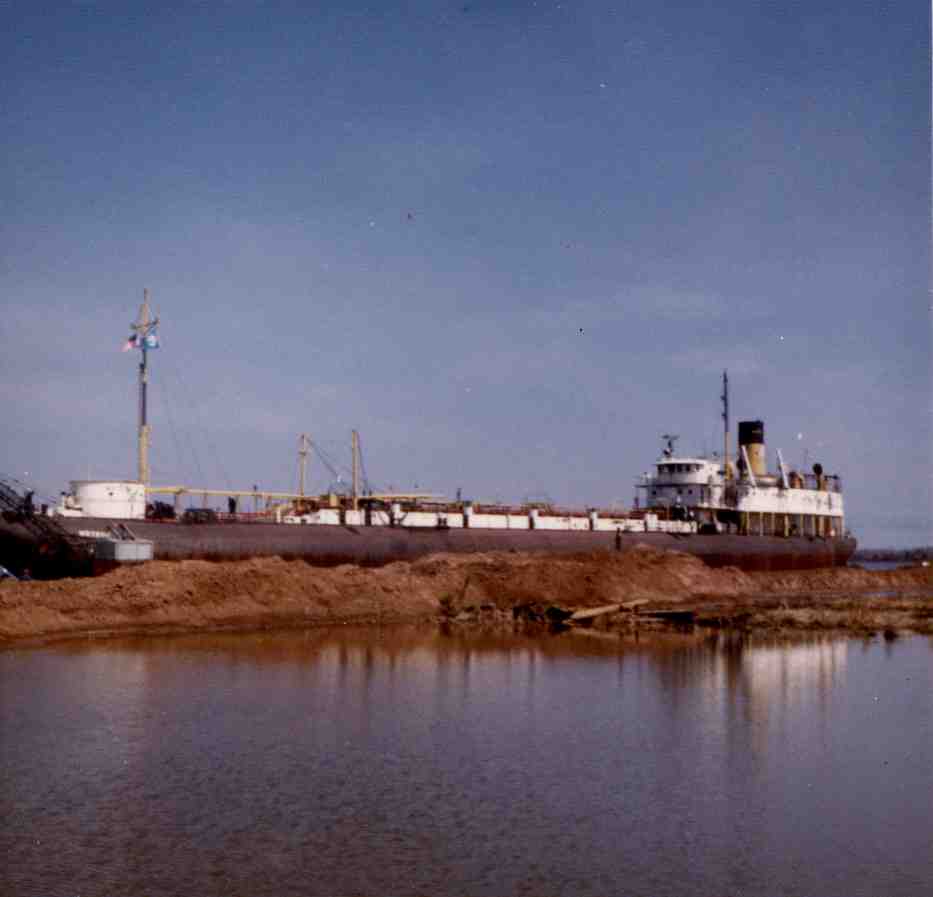
Written by Dara Fillmore, October 2017.
Featured image: Image courtesy of the Superior Public Museum
